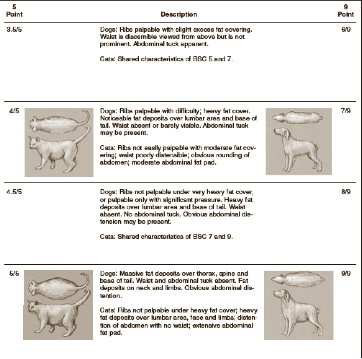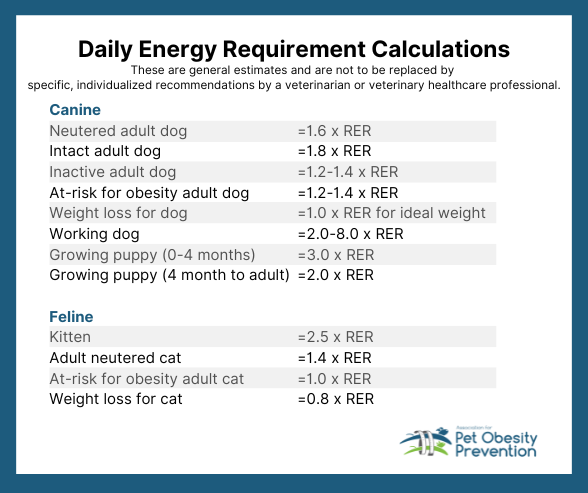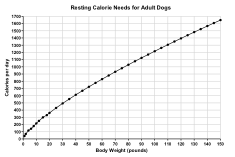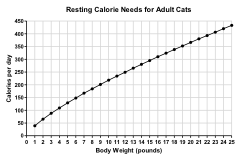Is allowing my pet to be overweight bad?
Is allowing my pet to be overweight bad? – From the moment you adopted your kitten or puppy into your family you could have been mistakenly or unintentionally overfeeding your furry friend. First off thank you for reading this vet clinic blog article on this topic – “Is allowing my pet to be overweight bad?”. EdPisaniJr.com wrote and edited this blog article therefore we hope you find it useful and helpful.

The quick answer is yes – unfortunately, your pet is likely overweight if you are asking this question. According to recent surveys in the veterinary industry, more than half the cats and dogs in the United States are tipping the scales as overweight or obese, with 59% of cats and 55.8% of dogs falling into these categories. Many owners don’t realize, or even avoid finding out if their pooch is too pudgy or their feline is too flabby.
Table of Contents
What factors influence a cat or dog’s weight?
- Diet – How much and what you feed your pet is the most important factor affecting your pet’s weight. This is a big one, most pet owners overfeed their pets with extra snacks throughout the day, and that can add up over time especially if your pet is not active.
- Exercise – The lack of physical activity can lead to weight gain and obesity.
- Genetics – Individual pets may have different metabolic rates, food drives, or physiological differences that place them more at risk for obesity. There are several identified genetic mutations associated with obesity and weight gain in humans and animals.
- Spay/Neuter Status – Pets that are spayed or neutered may experience hormonal changes that affect metabolism, and many may become less active, altering their caloric needs and leading to obesity.
- Age – Nutritional and dietary requirements change as pets age, along with nutrient digestion and catabolism, which can adversely affect weight.
- Medical Conditions – Certain medical conditions (hypothyroidism, hyperadrenocorticism, acromegaly, just to name a few) can cause weight gain in pets.
- Medications – Certain drugs, including corticosteroids and seizure medications, can cause a pet to gain weight.
Body-condition scoring | Is allowing my pet to be overweight bad?
An animal’s ever-expanding waistline can plague both the two- and four-legged members of the US population. Many people do not recognize that a pet’s weight is ideal because they believe the perfect body condition is too thin. Veterinary practices across the country hear a wide range of excuses for a pet’s extra weight. Obesity often is a sensitive subject, but veterinarians want the healthiest, happiest life possible for your pet and is well-equipped to help her shed those extra pounds.
First, know where your pet falls on the body-condition scale:
- Too thin
- 1 — Ribs, lumbar vertebrae, pelvic bones, and all bony prominences are visible from a distance; no discernible body fat; obvious loss of muscle mass
- 2 — Ribs, lumbar vertebrae, and pelvic bones are easily visible; no palpable fat; minimal loss of muscle mass
- 3 — Ribs are easily palpated and may be visible with no palpable fat; tops of the lumbar vertebrae are visible; pelvic bones are becoming prominent; obvious waist and abdominal tuck
- Ideal
- 4 — Ribs are easily palpable, with minimal fat; waist is easily noted when viewed from above; abdominal tuck is present
- 5 — Ribs are palpable without excess fat; waist is observed behind the ribs when viewed from above; abdominal tuck can be seen from the side
- Too heavy
- 6 — Ribs are palpable with slight excess fat; waist is discernible, but not prominent; abdominal tuck is present
- 7 — Ribs are difficult to palpate due to heavy fat cover; fat deposits are noticeable over the lumbar area and tail base; waist is absent or barely visible; abdominal tuck may be present
- 8 — Ribs are not palpable under heavy fat cover, or palpable only with significant pressure; heavy fat deposits are seen over the lumbar area and tail base; waist is absent; no abdominal tuck; obvious abdominal distension may be present
- 9 — Massive fat deposits are noticeable over the thorax, spine, and tail base; waist and abdominal tuck are absent; fat deposits are seen on neck and limbs; obvious abdominal distension is noted
Here is an interesting set of images to see what we are explaining to you.


You can get a rough idea of where your pet scores on the body-condition chart at home. Look at your pet from above. Does she have an hourglass figure with an indentation behind her ribs, or is she more rectangular or oval?
Next, look at your pet from the side. Does her belly tuck up as it heads toward the hind legs, or does it seem to droop and drag close to the ground? Don’t skip the rib test. Can you feel your pet’s ribs as you lightly run your hand across her side, or do you have to push hard to feel any bone under a thick layer of fat?
Obtaining your pet’s accurate body condition score is the most helpful tool to determine her ideal weight. While it’s nice to know a specific breed should weigh a certain amount or be fed according to the guidelines on a bag of food, each pet is an individual and requires a personalized diet and nutrition plan.
The big key here is a nutrition plan, you want to create one and stick to it. There are great diet options on the market. Are you enjoying this blog article and want edpisanijr.com to create blogs for your vet clinic? If so schedule an appointment to get the conversation started today!
Obesity-related health problems in pets | Is allowing my pet to be overweight bad? by EdPisaniJr.com
Chubby puppies and kittens are adorable, but at what cost to their health? Overweight pets are at increased risk of developing:
- Diabetes
- Joint problems
- Skin infections
- High blood pressure
- Chronic inflammation
- Kidney dysfunction
- Respiratory disorders
- Metabolic and endocrine diseases
- Various cancers
Stave off potential excess weight-related diseases by battling your pet’s bulge. Aim for a slow, steady decrease in your pet’s weight. A dog can safely lose 1% to 3% of its body weight per month, while a cat can lose 0.5% to 2% per month.
Make your pet work for every calorie she consumes, and burn off those extra treats. A shocking number of pets participate in little to no physical activity each day, so formulate an exercise plan in addition to a diet change. Your goal should be 30 minutes of activity per day for a dog, and three intense 5-minute play periods per day for a cat. Believe it or not, if you take your dog for a walk for 30 minutes daily it will greatly positively impact your blood pressure too.
Calculating your pet’s caloric requirements
Weight loss is simple, right? Reduce calories and increase exercise, and the pounds should melt away. But how many calories should your pet eat per day? Should you feed what’s recommended on the food bag? While those guidelines are a great place to start, they are just that—guidelines. Instead, use this handy formula to calculate your pet’s resting energy requirement, and then adjust it based on her lifestyle.
This Resting Energy Requirement (RER) formula is intended to estimate the number of calories needed for a pet to perform vital bodily functions, including breathing, digestion, circulation, organ function, etc.
The Resting Energy Requirement (RER) is a very basic estimate of a pet’s total daily energy needs and is a starting point for estimating how many calories or food a pet requires each day. A pet’s individual needs can vary widely.
Here is a straightforward mathematical breakdown you can use to figure out how much exercise and food is ideal for your breed.
RER in kcal/day =
(ideal or target weight in kg ^ 0.75) x 70
or (ideal or target weight in kg) to the 3⁄4 power) x 70
alternate calculation:
30 x (body weight in kilograms) + 70

Here are some guidelines for Pet Weight Loss
Based on a pet’s degree of excess body fat, it is often recommended to use a target weight higher than the ideal or goal weight when starting a weight loss program. We strongly advise pet owners not to reduce feeding below RER calories unless under direct supervision by their veterinary healthcare provider.
- General guidelines for safe weight loss in dogs are 1-5% body weight loss per month (3-5% in many cases). For cats, about one-half pound (0.25 kg) per month, or 1 to 3% of their current body weight.
- In cases that fail to respond to this number of calories, the total may need to be reduced, or an alternative therapeutic weight loss diet may be tested.
- For weight loss in dogs, feeding the calculated RER calories for a weight loss target weight (or ideal weight in some cases) should be adequate.
- For weight loss in cats, multiply the RER of the target or ideal weight by 0.8 (80% RER).
IMPORTANT NOTE: If the pet does not achieve desired or expected weight loss within 90 days, change the number of daily calories being fed, pet food brand, increase protein and fiber, change therapeutic weight loss diet formulation, reevaluate for an underlying medical condition, or implement other changes under veterinary supervision.
Remember that attaining and maintaining a healthy body condition and weight is based on providing an appropriate energy balance and meeting all nutritional needs of the dog or cat. Healthy nutrition depends on several additional factors such as:
- life stage,
- genetics,
- spay/neuter status,
- existing medical conditions,
- use of medications,
- the quality and composition of food.
This is why any weight loss program should only be done under the supervision of a veterinary healthcare team which can be discussed at your annual visit or by scheduling an appointment between annual visits.
Here is a quick chart that shows the weight versus exercise based on calorie intake.


If math isn’t your thing, there’s also charts shown here. Don’t forget to discuss caloric needs with your veterinarian, especially if your pet has any medical conditions.
Battle your pet’s bulge | Is allowing my pet to be overweight bad
You can show your pet how much you care in many ways other than treats. here are a few ideas we suggest you consider trying out:
- Take your dog for a sniff-friendly stroll, allowing her to smell every object along the way.
- Instigate a stimulating prey-and-predator game for your cat by urging her to chase a feather wand or a robotic mouse.
- If your pet is begging for a bite of forbidden people food, toss her a piece of lean meat or a fresh veggie instead of pizza crust or a potato chip.
Always your pet wants your attention most of all, so search for rousing physical activities you can do together and prevent the obesity that threatens your pet’s health.
Thank you for reading this blog article on “Is allowing my pet to be overweight bad?“
The edpisanijr.com wrote this article to help you better understand the things you see and hear when our caring staff members are caring for your pet.
Follow us on Linkedin now! Remember we love caring for your pet no matter what stage of life he or she is in. Again, thanks for reading this blog article – ”Is allowing my pet to be overweight bad?”
